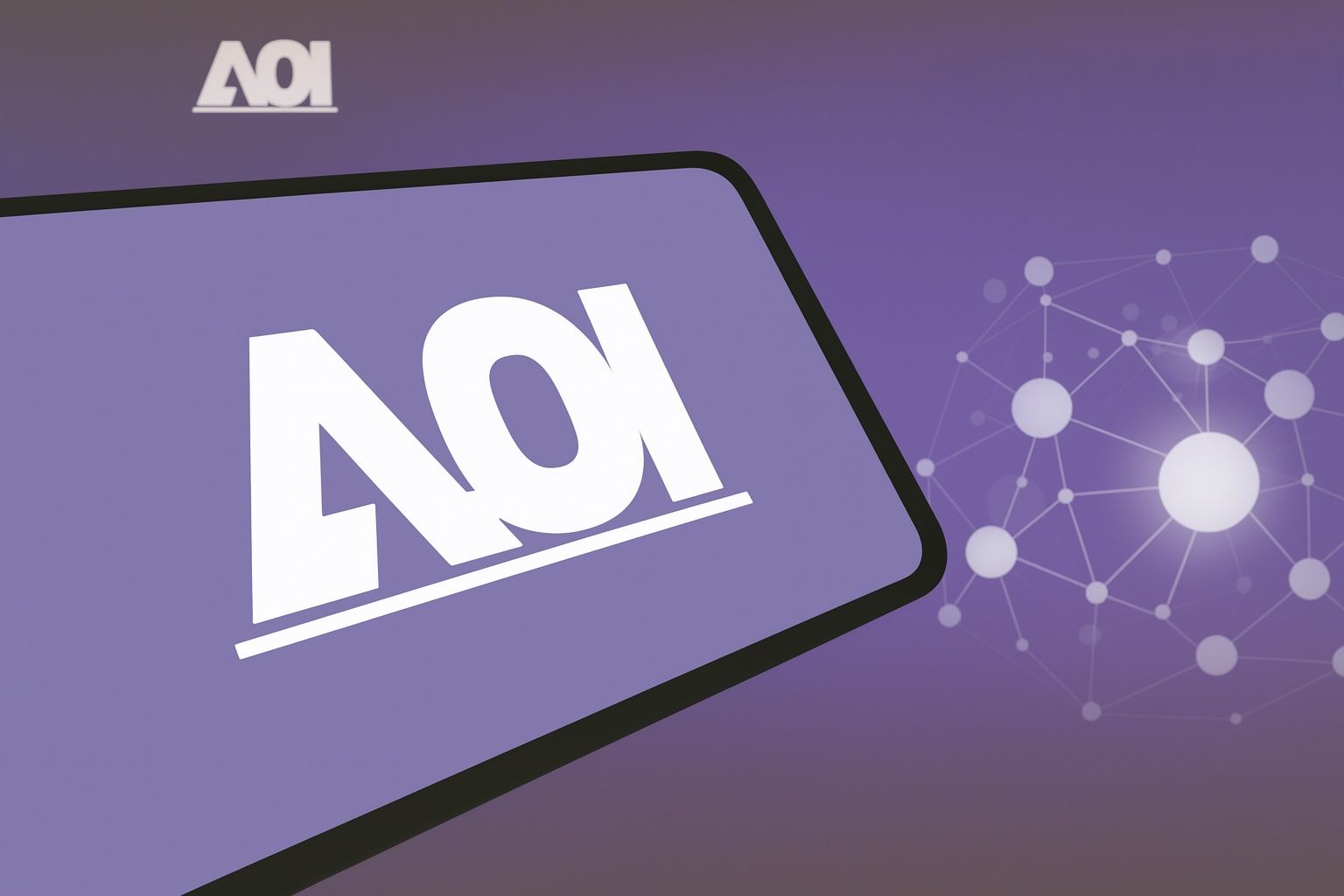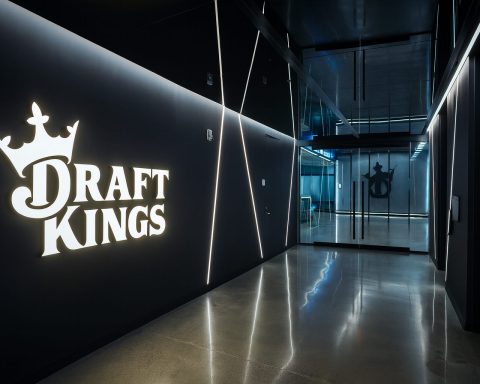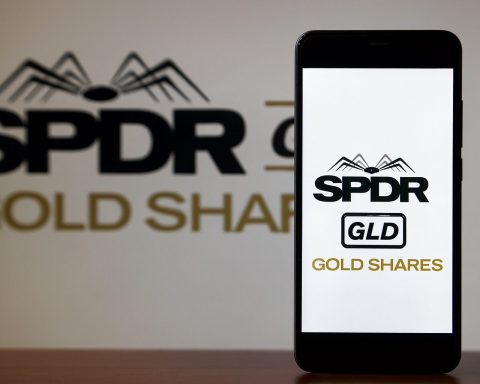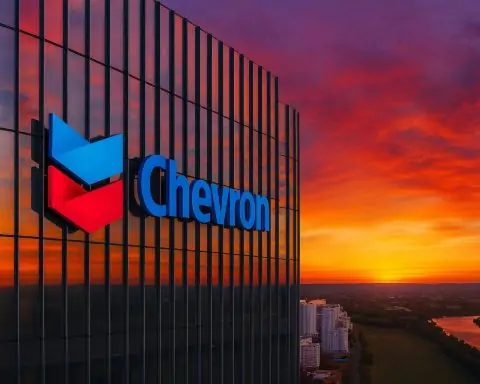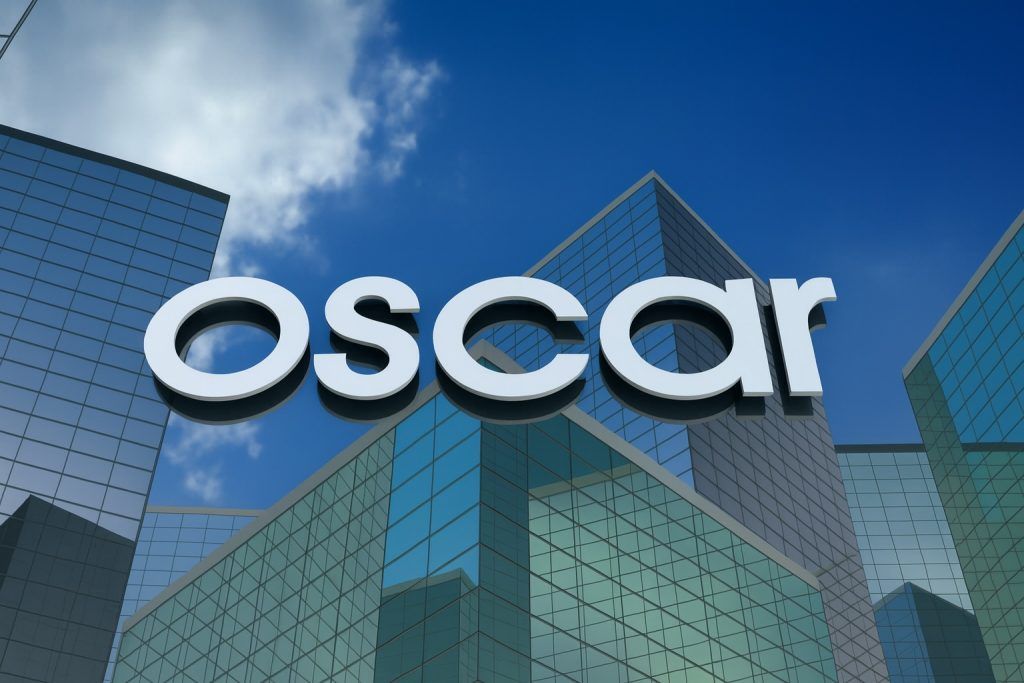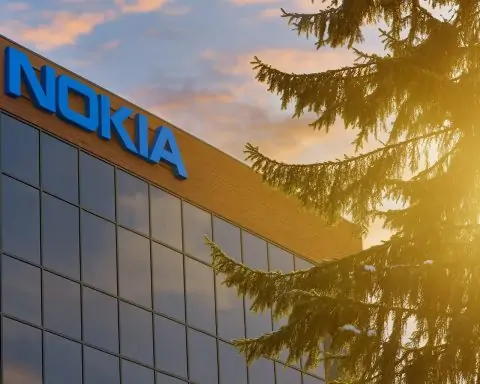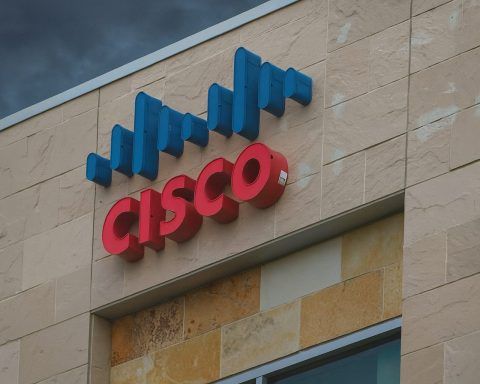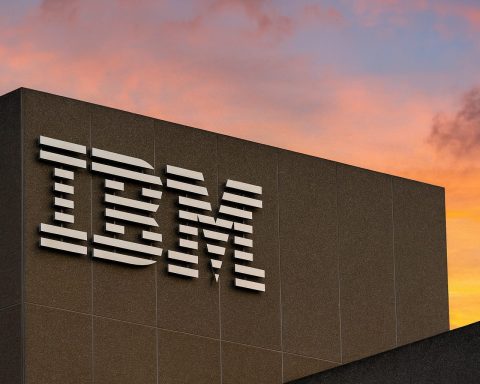- Stock price & trading range: Applied Optoelectronics Inc. (NASDAQ: AAOI) closed at US$27.93 on 6 Oct 2025 after opening at US$29.19 with an intraday high of US$33.57 and low of US$28.40 [1]. The shares have traded between US$9.71 and US$44.50 over the past year [2]. Average daily volume is nearly 5 million shares [3].
- Valuation metrics: Market capitalization ≈ US$2.07 billion with a price‑to‑sales ratio of 3.71 and price‑to‑book ratio of 4.11 [4]. The company is unprofitable (profit margin –42.29 % [5]; trailing EPS –3.57 [6]) and has a high beta (≈ 2.91 [7]), indicating significant volatility.
- Recent results (Q2 FY25): Revenue surged 137 % y/y to US$103 M, but EPS was –US$0.16 (missed estimates by US$0.08) and free cash flow remained negative [8]. Management guided Q3 revenue between US$115–127 M with non‑GAAP gross margin of 29.5 –31 % [9].
- Product & software announcements: On 29 Sept 2025, AOI showcased an 800 Gbit OSFP 2×SR4 multimode transceiver built on its 100 Gbit VCSEL technology at ECOC 2025. Senior VP Fred Chang said the integrated VCSEL design enables hyperscale and OEM customers to “future‑proof their optical infrastructure” by reducing power and cost per bit [10]. Earlier (10 Sept 2025), the company introduced AI‑powered modules for its QuantumLink Remote Management software, adding predictive diagnostics, real‑time analytics and network mapping [11] [12].
- Market sentiment: Analysts’ average 12‑month price target is ≈US$27.20 with estimates ranging from US$15 to US$34 [13]. A Nasdaq analysis noted that in mid‑Sept 2025 the share price already exceeded the consensus target, prompting debate whether valuations are stretched [14]. B. Riley and Wolfe Research remain neutral, while Raymond James and Needham maintain outperform/buy ratings [15].
- Investor activity: MarketBeat reported on 6 Oct 2025 that Chung Wu Investment Group bought 13,400 shares (~US$344 k) during Q2, while insiders bought 44,100 shares and sold 30,784 shares [16] [17]. The article highlighted the stock’s 50‑day moving average of US$24.93 and 200‑day moving average of US$20.86 [18].
Stock Performance & Technical Picture
Applied Optoelectronics’ share price has been on a roller‑coaster ride in 2025. After rocketing from below US$10 early in the year to a high above US$44.50, the stock pulled back to the US$27–33 range by early October. The company’s beta of 2.91 and a one‑year return of 115.6 %, far exceeding the 17.3 % return of the S&P 500, underline both the stock’s explosive gains and elevated volatility [19]. Five‑year returns, however, are a more modest 195.7 % versus the index’s 100.8 % [20], reflecting earlier under‑performance.
Technical indicators reveal a mixed picture. AOI trades above its 50‑day and 200‑day moving averages (around US$25 and US$21 respectively) [21], suggesting longer‑term momentum remains positive. However, the stock has been consolidating since August’s post‑earnings sell‑off. Short interest remains elevated, reflecting skepticism about the company’s ability to translate rapid sales growth into sustainable profitability.
Recent News & Catalysts
800 Gbit VCSEL Transceiver Demonstration (Sept 29 2025)
In late September AOI generated buzz by demonstrating its 100 Gbit VCSEL‑based 800 Gbit OSFP 2×SR4 optical transceiver at the ECOC conference. The device uses AOI’s vertically integrated VCSEL technology to deliver low‑power, short‑reach multimode connectivity aimed at hyperscale data‑center customers [22]. Senior VP Fred Chang said the integrated design “allows hyperscalers and OEMs to future‑proof their optical infrastructure” by reducing power consumption and cost [23]. The demonstration signals that AOI is pushing into next‑generation 800 Gbit markets just as research firm LightCounting predicts 800 Gbit transceiver sales will become the biggest driver of optical‑module growth in Q2 2025 [24].
AI‑Driven QuantumLink Modules (Sept 10 2025)
Earlier in September AOI announced four new AI‑powered modules for its QuantumLink Remote Management software, including telemetry, predictive diagnostics, analytics and network mapping. These modules apply machine learning to detect anomalies, forecast component health and provide real‑time visibility of network resources [25]. Todd McCrum, senior VP of AOI’s broadband business, said the goal is to use AI decision‑making to “reduce outages and improve reliability” for cable customers [26]. The modules are scheduled to launch in Q4 2025 and reflect AOI’s effort to generate software‑like recurring revenue on top of its hardware business.
Q2 FY25 Earnings (Aug 7 2025)
AOI’s August earnings release provided the first look at its financial trajectory after the 2024 turnaround. Revenue jumped 137 % y/y to US$103 M but net loss narrowed only modestly to US$9.1 M (–US$0.16 per share) due to heavy R&D and SG&A spending [27]. CEO Dr. Thompson Lin said the company delivered “strong year‑over‑year growth and gross margin expansion,” while CFO Dr. Stefan Murry highlighted the ramp‑up of 400 G and 800 G transceiver production [28]. For Q3, management guided revenue between US$115–127 M with non‑GAAP gross margins of 29.5–31 % and continued net losses of US$2–6 M [29]. Analysts noted that the earnings miss prompted profit‑taking, but the high growth rate supports the long‑term thesis.
Insider & Institutional Activity (Oct 6 2025)
MarketBeat reported that Chung Wu Investment Group bought 13,400 AAOI shares (~US$344 k) during Q2, while insiders collectively purchased 44,100 shares and sold 30,784 shares [30]. Director William Yeh bought 14,000 shares at US$22.86 and CFO Stefan Murry sold 12,000 shares [31]. The article also noted that the stock’s debt‑to‑equity ratio is 0.36, current ratio 2.11 and quick ratio 1.47, suggesting adequate liquidity [32]. Analyst sentiment was split: B. Riley remained neutral (US$15 target) and Wolfe Research rated “peer perform”, whereas Raymond James raised its target to US$25 and Needham maintained a US$32 buy rating [33].
Expert Commentary & Analyst Forecasts
Bull Case: Explosive Data‑Center & AI Demand
Independent analyst site Chart Guys argues that AOI is “the fiber optics play most investors are missing”. The article notes that revenue growth accelerated sharply in Q4 2024 and Q2 2025, driven by booming demand for 400 G and 800 G transceivers for AI and cloud workloads [34]. The bull thesis rests on several drivers:
- Exponential data growth and AI infrastructure build‑out are expected to require massive volumes of 400 G/800 G transceivers and eventually 1.6 T modules [35].
- AOI’s vertical integration and U.S. manufacturing may provide cost and supply‑chain advantages, particularly as customers seek to reduce reliance on Chinese suppliers [36].
- Scale benefits: ramping production to 2.5–3 million lasers per month could lower unit costs, allowing AOI to compete with larger rivals [37].
- QuantumLink’s AI modules and hardware‑software bundling create recurring revenue opportunities and higher margins [38].
Another bullish article from AInvest calls AOI’s Q2 results “a strategic masterstroke.” It highlights that data‑center revenue jumped 40 % quarter‑over‑quarter, with 70 % of that revenue coming from 100 G products while 400 G transceiver sales grew 43 % y/y [39]. The article notes that three tier‑one customers are already sampling AOI’s 800 G modules, with volume shipments expected in late 2025 [40]. The CATV segment also grew nearly 700 % y/y due to the ramp of 1.8 GHz amplifiers [41]. AInvest expects AOI to generate US$1.3 B revenue by 2028, implying a 51.5 % compound annual growth rate, and views the stock as a high‑conviction long‑term play despite near‑term volatility [42].
Bear Case: Execution & Competitive Risks
Chart Guys also warns that AOI faces substantial risks. The company has heavy debt (~US$211 M) and negative free cash flow (–US$112.9 M) despite improved gross margins [43]. Key risks include:
- Customer concentration: AOI depends on a handful of hyperscale customers; losing a major buyer could severely hurt revenues [44].
- Competition: Larger players such as Lumentum, Coherent and Broadcom are investing aggressively in 800 G and 1.6 T modules [45].
- Capex cycle swings: Telecom and cable operators’ spending can whipsaw, leading to unpredictable demand [46].
- Execution risk: AOI must ramp production quickly while maintaining quality. Missing product‑qualification timelines or encountering yield issues could erode customer confidence [47].
MarketBeat’s coverage underlines this tension, noting that while revenue growth is impressive, the company continues to post losses and heavy insider selling could be a warning sign [48]. Analysts remain divided; the consensus price target of US$27.20 implies limited upside from current levels [49], but the wide range of targets (US$15–34) shows deep disagreement about AOI’s fair value [50].
Financial Health & Valuation
AOI’s financials highlight both progress and frailty. The company achieved gross margins above 30 % for the first time in years and expects similar levels going forward [51]. However, profitability remains elusive: profit margin is –42.3 %, return on assets –5.23 % and return on equity –50.9 % [52]. AOI holds about US$64.7 M in cash but has US$211 M in debt and a debt‑to‑equity ratio of 49.7 % [53]. Levered free cash flow is deeply negative (–US$274.2 M) [54], reflecting heavy investment in capacity expansion. Management plans to spend US$120–150 M on capital expenditures in 2025, funded partly by at‑the‑market (ATM) share offerings that raised around US$98 M [55].
These figures explain why some analysts caution against chasing the stock after its run‑up. Bulls argue that scaling production of 400 G/800 G modules will eventually generate enough operating leverage to offset current losses. Bears counter that the company may need further equity issuance, diluting shareholders, before it reaches profitability. Investors should also note that AOI’s beta near 3 exposes the stock to market swings and may not suit conservative portfolios.
Industry Trends – The Rising Tide of 800 G and AI Networking
AOI’s fortunes are tied to the broader surge in high‑speed optical networking. Research firm LightCounting expects global optical transceiver sales to rise 10 % in Q2 2025, with 800 G Ethernet modules driving most of the growth [56]. Sales of 400 G modules are expected to decline as Amazon and Meta transition to higher‑speed gear [57]. The firm also notes that telecom capex remains weak, particularly in China where the three major carriers are cutting spending by 10 % [58]. In contrast, cloud and hyperscaler capex continues to soar: Alphabet, Amazon, Meta, Microsoft and Oracle all reported significantly higher spending compared with 2024 [59]. Oracle’s capex rose 233 % year over year [60], illustrating the scale of investment behind AI infrastructure.
Further down the road, industry analysts anticipate a shift from 800 G to 1.6 T modules. A strategic guide from Link‑PP notes that shipments of 400 G and 800 G modules exceeded 20 million units in 2024, generating nearly US$9 billion in revenue, and the optical‑module market is projected to reach US$12 billion by 2026 [61]. The report observes that 800 G transceiver sales rebounded 10 % quarter‑over‑quarter in Q2 2025, while early 1.6 T shipments are emerging [62]. The global pluggable‑optics market is expected to grow from US$5.6 B in 2024 to US$9.9 B by 2030, reflecting a 9.8 % CAGR [63].
Beyond data centers, a global fiber‑to‑the‑home boom is unfolding. A TS2.tech report notes that the United States allocated US$42.5 B through the BEAD program to expand fiber to unserved regions, while South Korea has connected ~89 % of households via fiber [64]. India’s BharatNet has delivered fiber to over 214,000 villages [65] and China expects 90 % of broadband subscribers on fiber by 2027 [66]. Next‑generation standards such as 10G‑PON and 50G‑PON enable household speeds of 10–50 Gbps [67]. The same report highlights that AI‑driven network operations (AIOps) are reducing outages and enabling self‑healing networks [68], reinforcing why hyperscalers demand advanced optical transceivers and network‑management software like AOI’s QuantumLink.
Conclusion: A High‑Risk, High‑Reward Fiber‑Optics Play
Applied Optoelectronics sits at the nexus of two secular trends: the explosion of AI‑driven data‑center traffic and the global shift from copper to fiber. Its vertically integrated manufacturing, U.S. facilities and growing software portfolio could allow AOI to capture outsized share of the 800 G and eventually 1.6 T transceiver market. Recent product demonstrations and AI‑powered software modules show that management is not resting on past achievements.
Yet investors should temper enthusiasm with realism. AOI’s losses, high leverage and negative free cash flow remain significant headwinds. Customer concentration and fierce competition from larger optical‑component vendors mean any slip‑up in execution could derail the growth story. Analysts’ price targets span a wide range, reflecting uncertainty about the company’s ability to convert booming demand into sustainable profits. Consequently, AAOI may be best suited for risk‑tolerant investors who believe the data‑center optics boom has only just begun and are willing to weather volatility for the prospect of outsized returns.
References
1. finance.yahoo.com, 2. finance.yahoo.com, 3. finance.yahoo.com, 4. finance.yahoo.com, 5. finance.yahoo.com, 6. finance.yahoo.com, 7. finance.yahoo.com, 8. www.globenewswire.com, 9. www.globenewswire.com, 10. www.globenewswire.com, 11. www.globenewswire.com, 12. www.globenewswire.com, 13. www.tipranks.com, 14. www.nasdaq.com, 15. www.marketbeat.com, 16. www.marketbeat.com, 17. www.marketbeat.com, 18. www.marketbeat.com, 19. finance.yahoo.com, 20. finance.yahoo.com, 21. www.marketbeat.com, 22. www.globenewswire.com, 23. www.globenewswire.com, 24. www.lightwaveonline.com, 25. www.globenewswire.com, 26. www.globenewswire.com, 27. www.globenewswire.com, 28. www.globenewswire.com, 29. www.globenewswire.com, 30. www.marketbeat.com, 31. www.marketbeat.com, 32. www.marketbeat.com, 33. www.marketbeat.com, 34. www.chartguys.com, 35. www.chartguys.com, 36. www.ainvest.com, 37. www.chartguys.com, 38. www.chartguys.com, 39. www.ainvest.com, 40. www.ainvest.com, 41. www.ainvest.com, 42. www.ainvest.com, 43. www.chartguys.com, 44. www.chartguys.com, 45. www.chartguys.com, 46. www.chartguys.com, 47. www.chartguys.com, 48. www.marketbeat.com, 49. www.tipranks.com, 50. www.tipranks.com, 51. www.globenewswire.com, 52. finance.yahoo.com, 53. finance.yahoo.com, 54. finance.yahoo.com, 55. www.ainvest.com, 56. www.lightwaveonline.com, 57. www.lightwaveonline.com, 58. www.lightwaveonline.com, 59. www.lightwaveonline.com, 60. www.lightwaveonline.com, 61. www.link-pp.com, 62. www.link-pp.com, 63. www.link-pp.com, 64. ts2.tech, 65. ts2.tech, 66. ts2.tech, 67. ts2.tech, 68. ts2.tech
